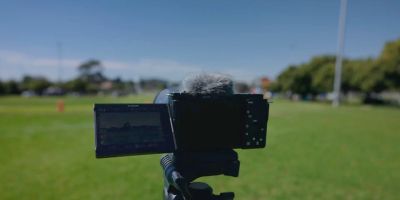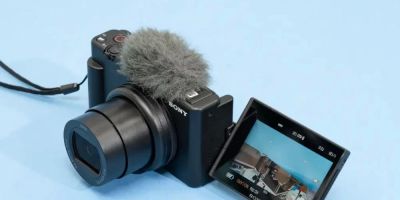- 1. Why Astrophotography Requires Special Gear
- 2. Best Camera Bodies for Astrophotography
- 3. Top Lenses for Capturing the Night Sky
- 4. Accessories to Enhance Your Astrophotography
- 5. Why Choose Photo Studio for Your Astrophotography Gear
1. Why Astrophotography Requires Special Gear
Astrophotography is a fascinating field of photography that allows you to capture the beauty of the night sky, including stars, planets, galaxies, and other celestial phenomena. However, photographing the night sky is significantly different from shooting daytime scenes. The challenges of low light, long exposure times, and capturing fine details require specialized gear. The right equipment is crucial for achieving clear, crisp, and stunning images of celestial bodies. Without the proper tools, astrophotography can be frustrating and difficult to master.
In this article, we will explore the best photography gear for astrophotography, including cameras, lenses, and accessories that can help you take your night sky photos to the next level. Whether you're a beginner or an experienced astrophotographer, having the right gear can make a world of difference in the quality of your images.
2. Best Camera Bodies for Astrophotography
The foundation of any great astrophotography setup starts with the camera body. When photographing the night sky, you need a camera that can handle long exposures, high ISO settings, and provide excellent low-light performance. Here are some of the best camera bodies for astrophotography:
2.1 Full-Frame Cameras
Full-frame cameras are the best choice for astrophotography due to their ability to capture more light and produce images with less noise in low-light conditions. Cameras like the Canon EOS 6D Mark II and the Nikon D750 are excellent choices for capturing stunning night sky shots. These cameras also have larger sensors, which helps in capturing more details in the dark sky.
2.2 Mirrorless Cameras
Mirrorless cameras, such as the Sony Alpha a7III or the Canon EOS R, are becoming increasingly popular in astrophotography. These cameras are lighter and more compact than traditional DSLRs, making them easier to handle and use for long periods. They also offer impressive low-light performance, making them ideal for capturing stars and galaxies.
2.3 Crop-Sensor Cameras
If you're just starting with astrophotography and have a limited budget, crop-sensor cameras can be a great option. While they may not capture as much light as full-frame cameras, they still perform well with the right settings and lenses. Cameras like the Canon EOS 90D or Nikon D7500 are budget-friendly choices that can help you get started with astrophotography.
3. Top Lenses for Capturing the Night Sky
Along with a solid camera body, having the right lens is essential for capturing the night sky. Lenses for astrophotography need to have wide apertures to allow as much light as possible into the camera sensor. Here are some of the best lenses for astrophotography:
3.1 Wide-Angle Lenses
Wide-angle lenses are ideal for astrophotography because they allow you to capture more of the night sky in a single shot. Lenses with focal lengths between 14mm and 24mm are perfect for capturing starry skies and even the Milky Way. Popular options include the Canon EF 16-35mm f/2.8L III USM and the Sigma 14mm f/1.8 DG HSM Art lens.
3.2 Fast Lenses
Fast lenses, or lenses with a wide aperture (f/2.8 or wider), are essential for astrophotography. A fast lens lets in more light, allowing you to capture sharper, brighter images of stars. The Nikon 14-24mm f/2.8G ED and the Samyang 14mm f/2.8 are excellent choices for night sky shots.
3.3 Telephoto Lenses
If you want to photograph distant celestial objects like planets or deep-sky objects, a telephoto lens will allow you to zoom in and capture more detail. The Canon EF 70-200mm f/2.8L IS III USM is a great option for capturing more distant stars and planets.
4. Accessories to Enhance Your Astrophotography
In addition to a camera and lens, there are several accessories that can greatly enhance your astrophotography experience. These tools help improve the quality of your photos and make the process of capturing the night sky much easier:
4.1 Tripods
A sturdy tripod is essential for astrophotography, as long exposure times are required to capture enough light from the stars. A tripod ensures that your camera remains steady throughout the exposure, preventing blurry images. Look for a tripod that is stable and lightweight for ease of use in remote locations. Popular choices include the Manfrotto MT190XPRO3 and the Gitzo GT1545T.
4.2 Star Trackers
Star trackers are devices that help compensate for the Earth's rotation, allowing you to take longer exposures without star trails. This is especially useful for deep-sky astrophotography. The Sky-Watcher Star Adventurer 2i and the iOptron SkyGuider Pro are excellent star tracker options for astrophotographers looking to capture more detail in their images.
4.3 Remote Shutter Release
To avoid camera shake during long exposures, using a remote shutter release is recommended. This accessory allows you to trigger your camera's shutter without touching it, ensuring that your images remain steady and sharp. Many cameras have a built-in remote shutter option, but you can also use external releases like the Canon RC-6 or Nikon ML-L3.
5. Why Choose Photo Studio for Your Astrophotography Gear
At Photo Studio, we understand that astrophotography requires the right gear for optimal results. We offer a wide selection of cameras, lenses, tripods, and other accessories specifically tailored for capturing the night sky. Whether you're a beginner or an experienced astrophotographer, our expert team is here to help you find the best equipment for your needs. Browse our collection of top-quality gear and get expert advice on building your perfect astrophotography setup.





